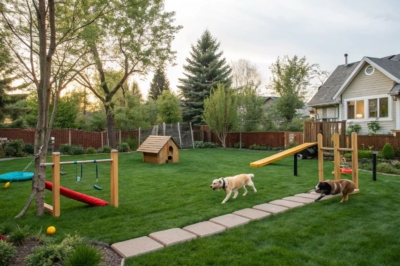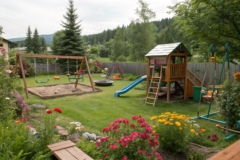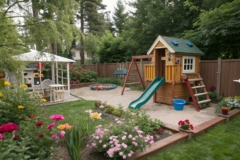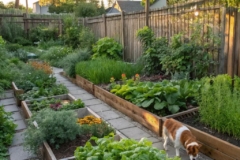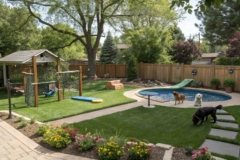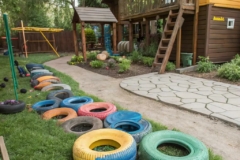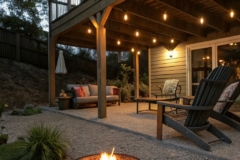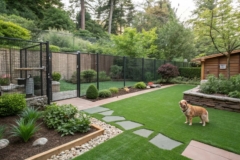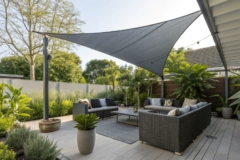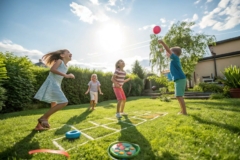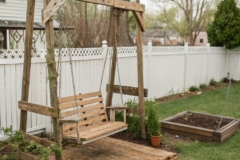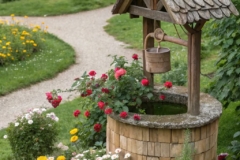1. Set Up an Agility Course
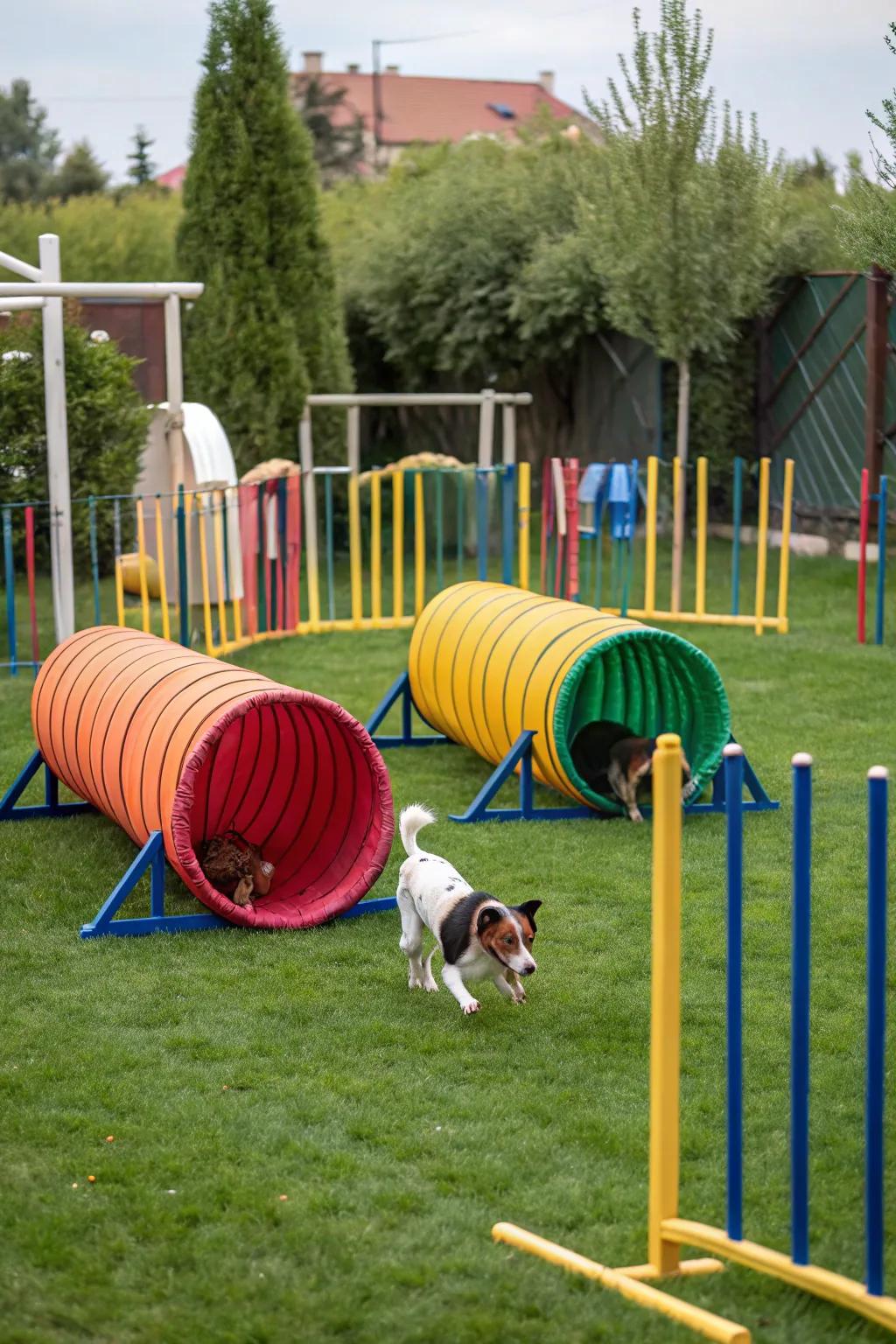
Building a mini agility course is a fantastic way to keep your dog entertained and fit. My dog absolutely loves zooming through tunnels and over hurdles in our backyard setup!
Products that could assist:
- Dog Agility Tunnel: Encourage your dog’s agility with a fun play tunnel perfect for energetic zoomies.
- Adjustable Dog Hurdles: Challenge your pet with adjustable hurdles to boost their jumping skills and fitness.
- Dog Agility Weave Poles: Enhance your dog’s agility with weave poles designed for exciting backyard training sessions.
2. Design a Multi-Level Playground
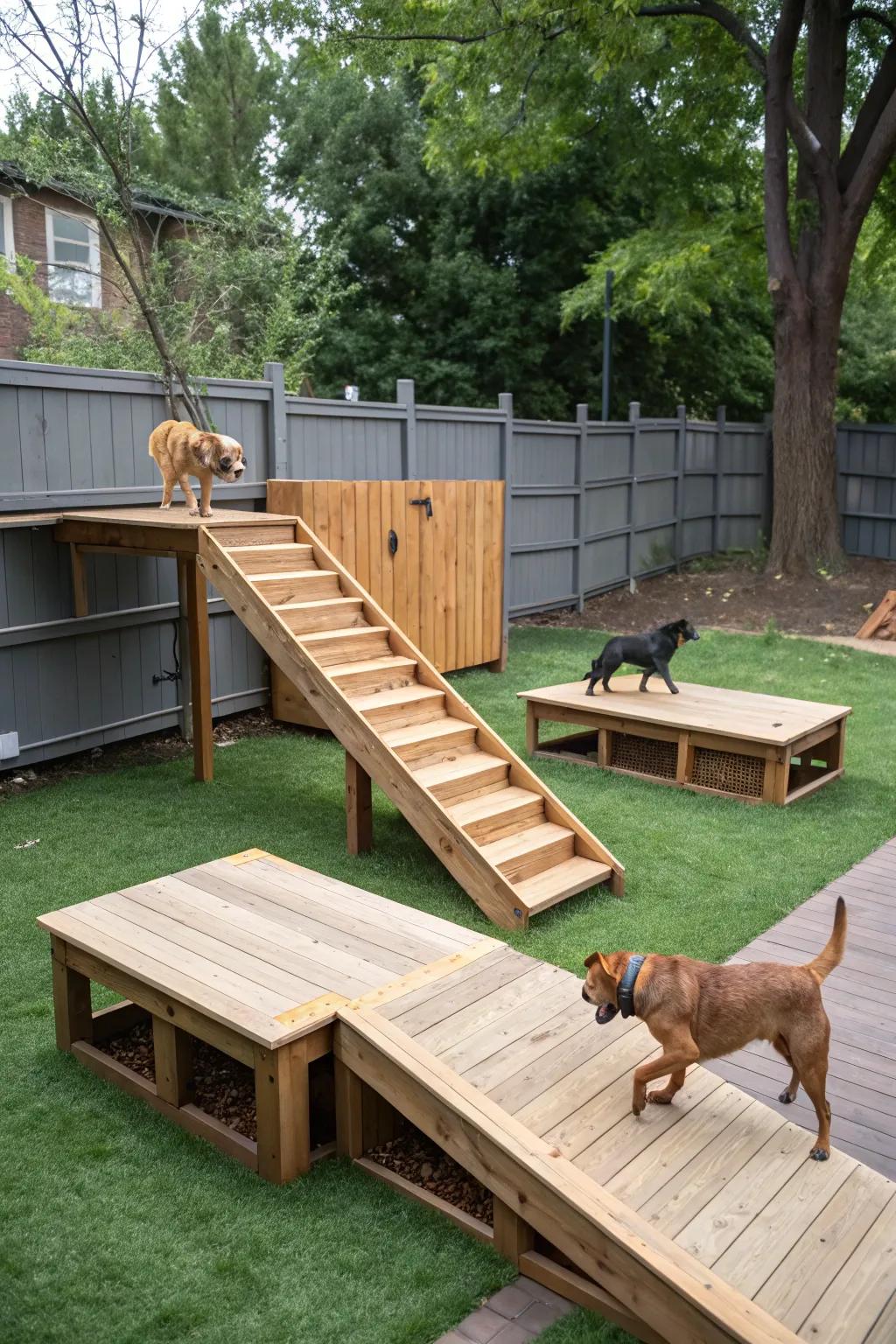
Add platforms for a multi-level experience. It’s a unique way to maximize space, and my dogs enjoy the different vantage points.
A few relevant products:
- Outdoor Dog Play Platforms: Enhance your yard with durable play platforms for a dynamic multi-level dog experience.
- Pet Ramp or Stairs: Provide easy access to elevated areas with a sturdy ramp or stairs for adventurous dogs.
- Weatherproof Dog Playhouse: Offer shelter and a fun spot with a weatherproof playhouse to complete your dog’s playground.
3. Build a Dog-Friendly Obstacle Course
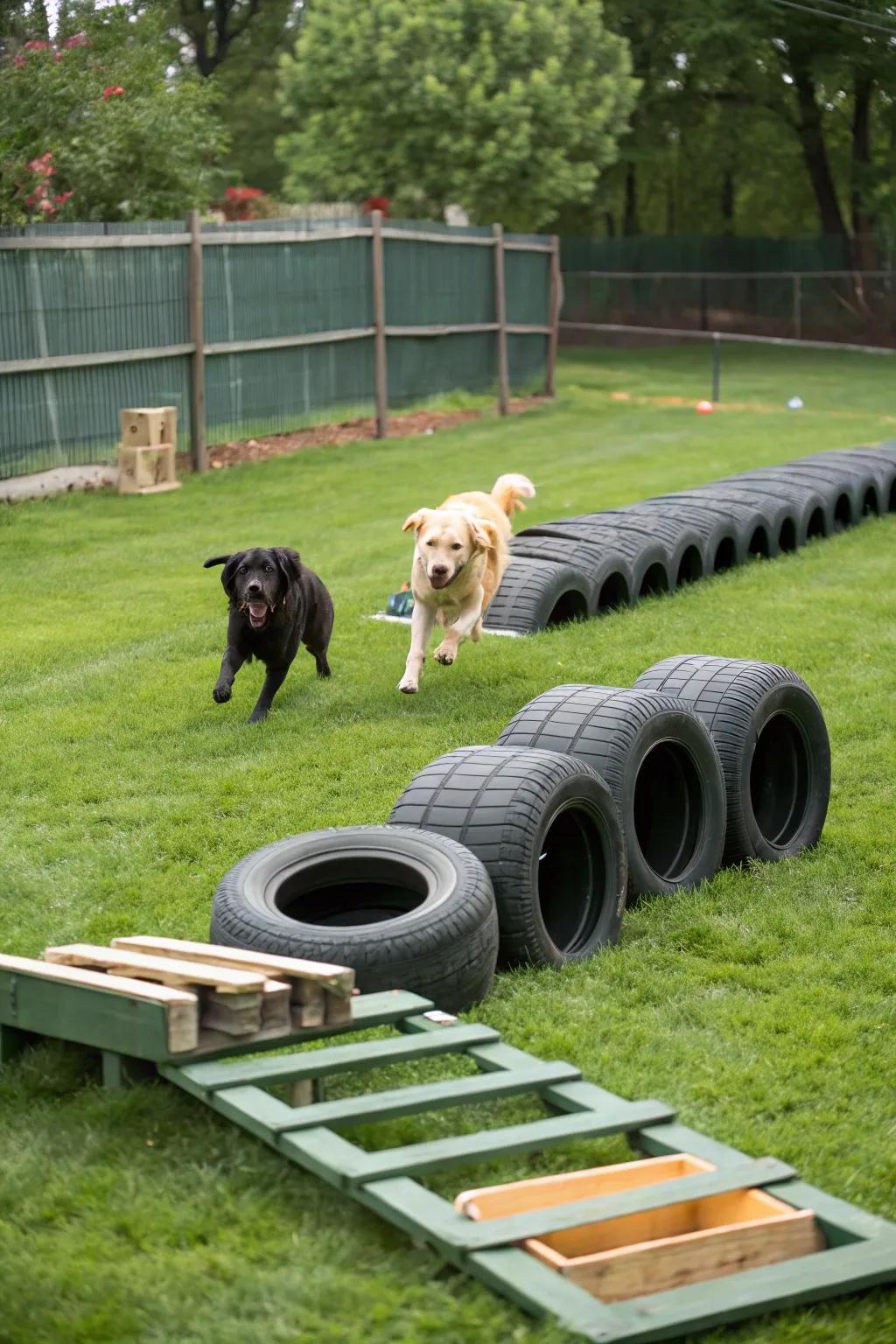
Use tires and pallets to create a unique obstacle course. It’s an inexpensive way to add a challenging play area, and my dog loves the adventure.
Some handy options:
- Set of Heavy-Duty Tires: Create challenging play structures with durable tires for endless dog adventure time in your yard.
- Wooden Pallets: Use versatile wooden pallets to build unique dog obstacles and encourage playful interactions.
- Dog Agility Tunnel: Add excitement and fun with a flexible dog agility tunnel perfect for creating dynamic courses.
4. Incorporate Balance Beams

A simple balance beam can be a fun addition to your dog’s play area. My pup enjoys the challenge and it helps improve their coordination.
These products might be useful:
- Adjustable Dog Agility Training Beam: Engage your dog with this adjustable beam, enhancing balance and coordination with every step.
- Wooden Dog Balance Teeter Board: Add excitement to playtime with a sturdy teeter board that challenges your pet’s agility skills.
- Portable Pet Agility Seesaw: Boost your dog’s confidence and physical abilities with a fun, portable agility seesaw.
5. Create a Water Play Area
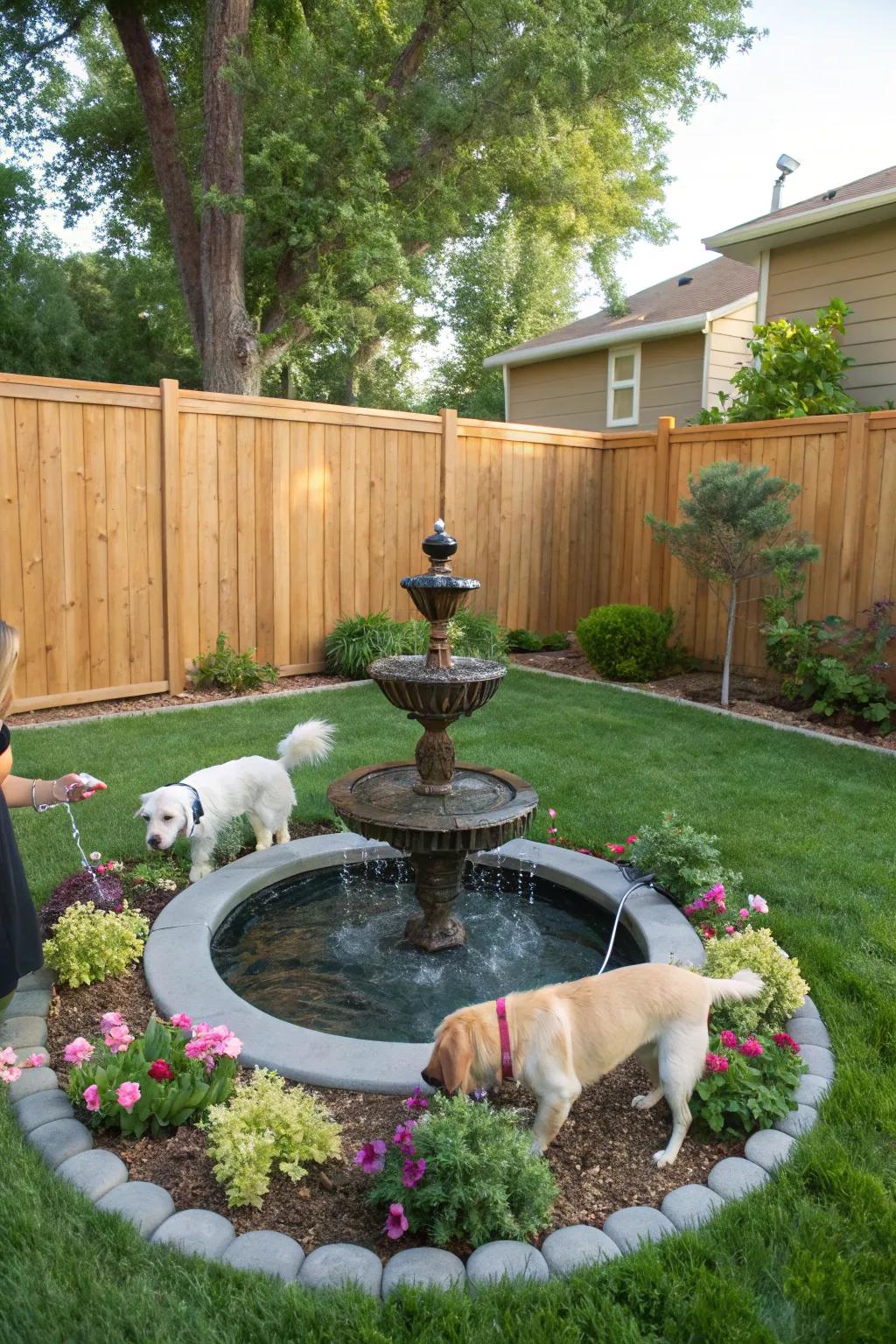
A small water fountain or feature adds fun and helps keep dogs hydrated. My dogs love splashing and drinking from it during playtime.
Might be a good match:
- Outdoor Water Fountain: Enhance playtime with an elegant fountain that’s perfect for splashing and drinking. Keep pets refreshed!
- Pet Water Dispenser: Ensure your dogs stay hydrated with a reliable outdoor water dispenser. Easy to use and refill!
- Dog Pool with Fountain: Add excitement with a unique dog pool featuring a fountain. Encourage active and fun playtime!
6. Use Pet-Safe Plants
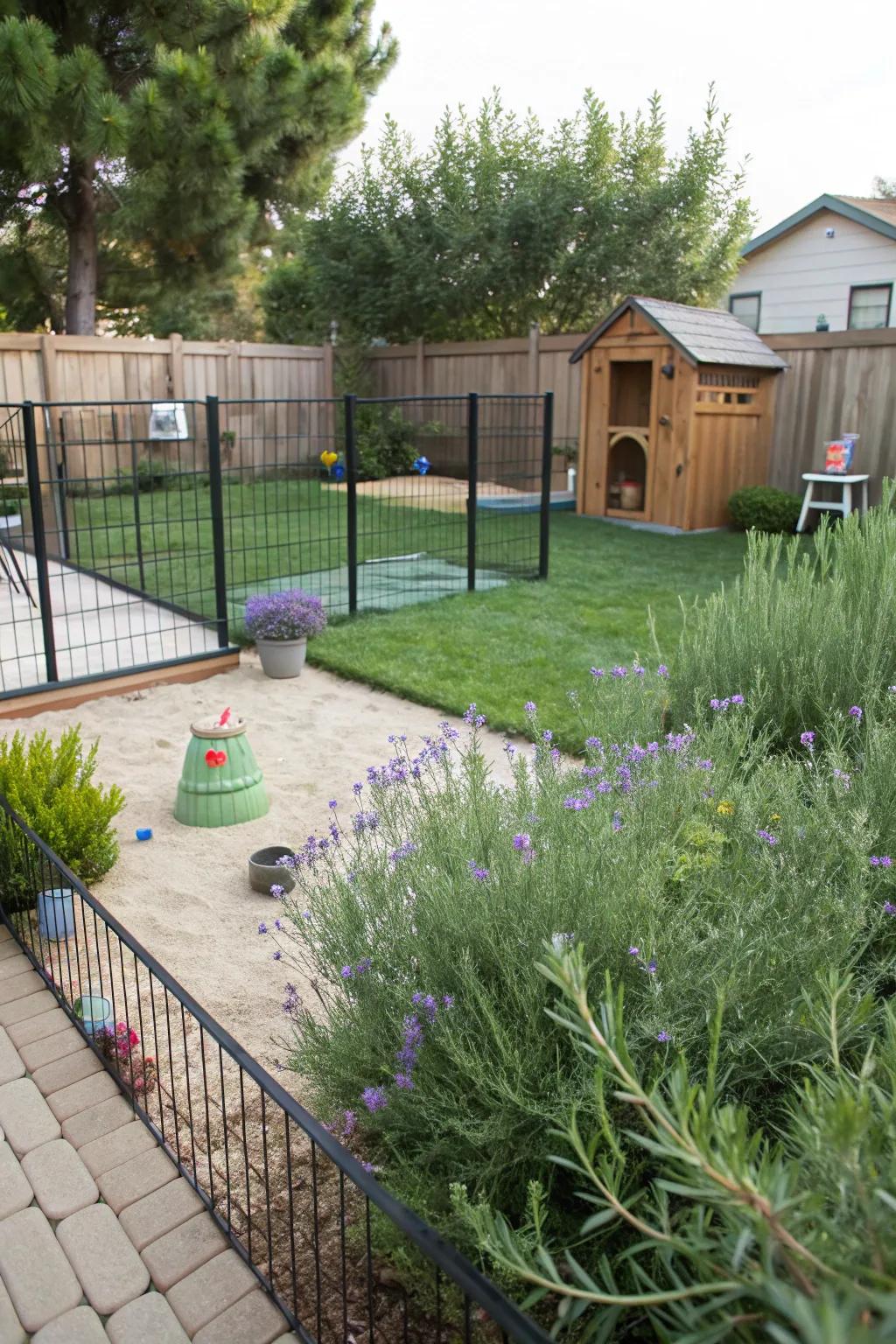
Surround your play yard with pet-safe plants to ensure a safe environment. I love having lavender and rosemary, which are both dog-friendly and fragrant.
Consider these options:
- Lavender Plants: Add beauty and fragrance to your yard with pet-safe lavender plants. Perfect for peaceful play areas.
- Rosemary Plants: Enhance your play yard’s aroma with easy-to-grow, dog-friendly rosemary plants. Safe and soothing.
- Pet-Safe Plant Care Kit: Ensure your plants thrive safely with this pet-friendly plant care kit, ideal for lush growth.
7. Design a Cozy Chill Zone
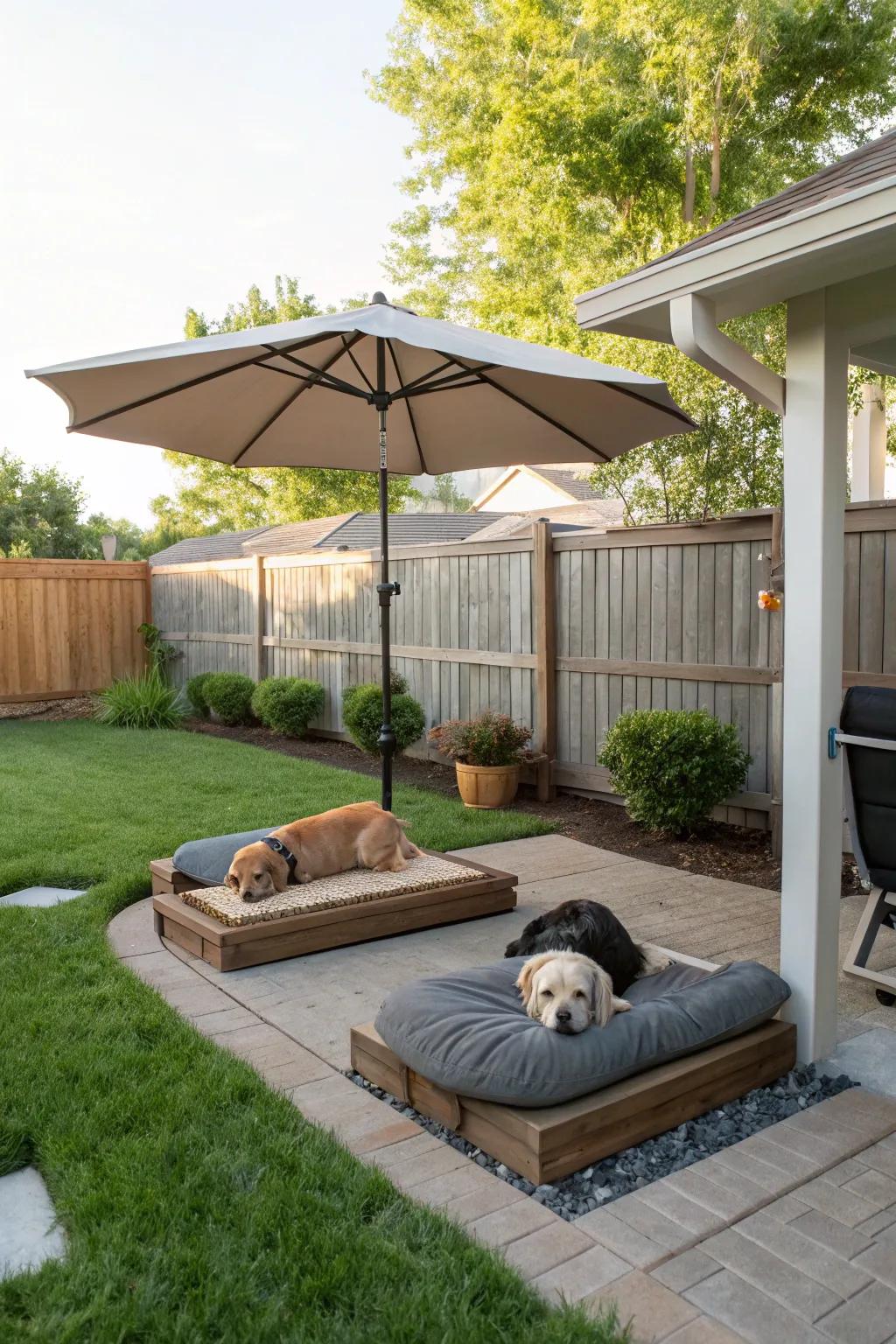
Every dog needs a shady chill zone to relax after play. A simple umbrella or a dog house works wonders in my backyard.
Items that may come in handy:
- Large Outdoor Patio Umbrella: Provide shade and comfort in your dog’s chill zone with this durable outdoor umbrella.
- Elevated Dog Bed with Cushion: Enhance your pet’s relaxation with this comfortable and durable elevated dog bed and cushion.
- Waterproof Dog House: Offer your dog a cozy retreat with this durable, weather-resistant waterproof dog house.
8. Set Up a Safe Dig Area

Designate a specific area with soft soil or mulch for digging. It satisfies their natural digging instincts and keeps the rest of your yard pristine.
Maybe worth checking out:
- Soft Mulch for Pets: Introduce soft mulch for your dog’s digging area to keep them happy and entertained.
- Garden Border Edging: Use durable garden border edging to define and keep your dig area neat and contained.
- Dog Digging Sand: Provide quality sand in your dog’s dig zone to satisfy their natural digging urges effortlessly.
9. Create a Digging Zone
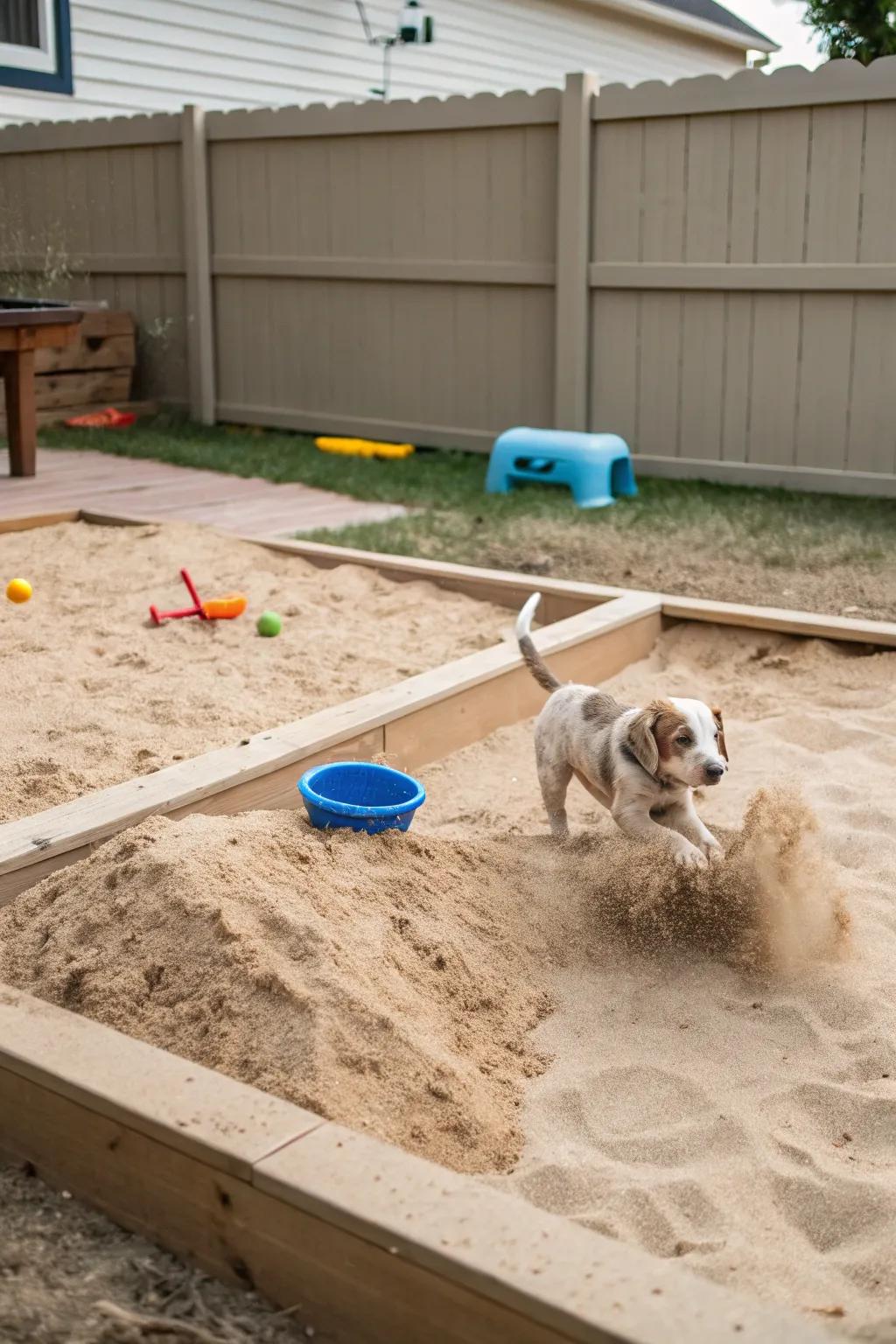
A sandbox is a digger’s dream and keeps them from tearing up your flower beds. I filled mine with soft sand, and it’s become my pup’s favorite treasure hunt spot.
Check these products out:
- Outdoor Sandbox with Cover: Provide your pup a dedicated digging space to keep them engaged and happy outdoors.
- Play Sand for Sandbox: Fill your sandbox with soft play sand for the ultimate digging adventure for your dog.
- Dog-Friendly Sandbox Toys: Add fun and excitement to your dog’s digging zone with durable sandbox toys.
10. Install a Pet-Friendly Ground Cover
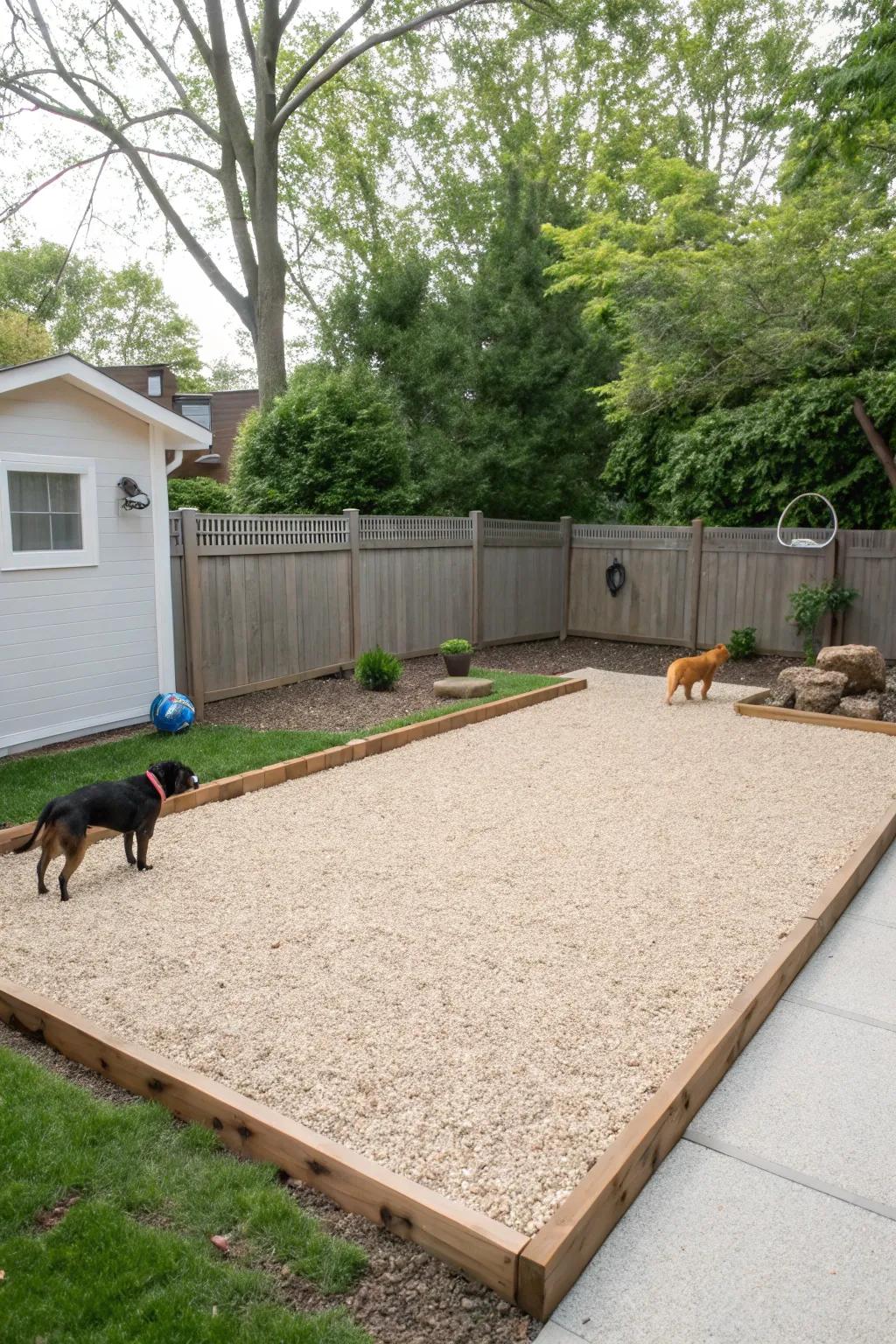
Use pea gravel or wood chips for a pet-friendly ground cover. It’s easy on paws, and I find it simple to maintain in my yard.
You might give these a try:
- Pea Gravel for Landscaping: Enhance your pet’s play yard with durable pea gravel that’s gentle on paws and easily maintained.
- Natural Wood Chips for Play Areas: Create a safe play yard with natural wood chips, offering comfort and easy upkeep for pet owners.
- Garden Edging for Ground Covers: Keep your pet’s play area tidy with durable garden edging that contains ground covers effectively.
11. Install a Splash Zone
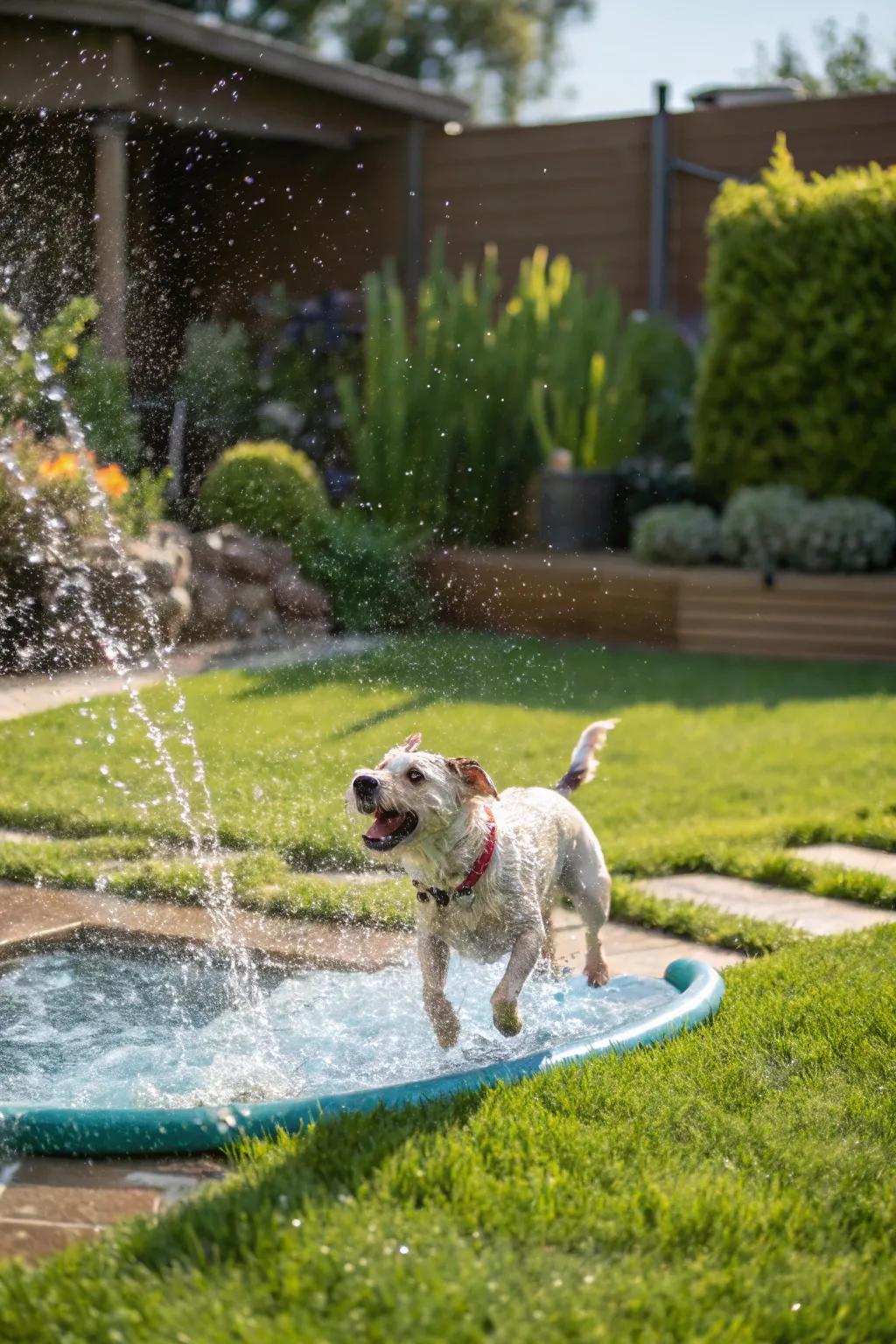
Add a small splash pad or kiddie pool to help your dog cool off during the hot Texas summers. It’s a hit in my yard, especially when the temperatures soar.
A few suggestions:
- Pet-Friendly Splash Pad: Provide endless fun for your dog with an easy-to-install splash pad. Beat the heat!
- Durable Kiddie Pool: Let your pup cool off in a sturdy kiddie pool designed for play and relaxation.
- Adjustable Water Sprinkler: Keep your dog entertained and refreshed with an adjustable water sprinkler system.
12. Add Interactive Features

Interactive elements like a treat puzzle keep dogs mentally stimulated. I hide treats in mine, and my dog loves the challenge.
You might like:
- Interactive Dog Treat Puzzle: Challenge your dog’s mind with fun treat puzzles they will love solving. Keep them engaged!
- Dog Puzzle Feeder Toy: Enhance your dog’s play yard with a stimulating puzzle feeder. Fun and rewarding for pets!
- Smart Dog Puzzle Game: Encourage problem-solving and reward your dog with a smart and engaging puzzle game.
13. Include a Relaxation Spot for You
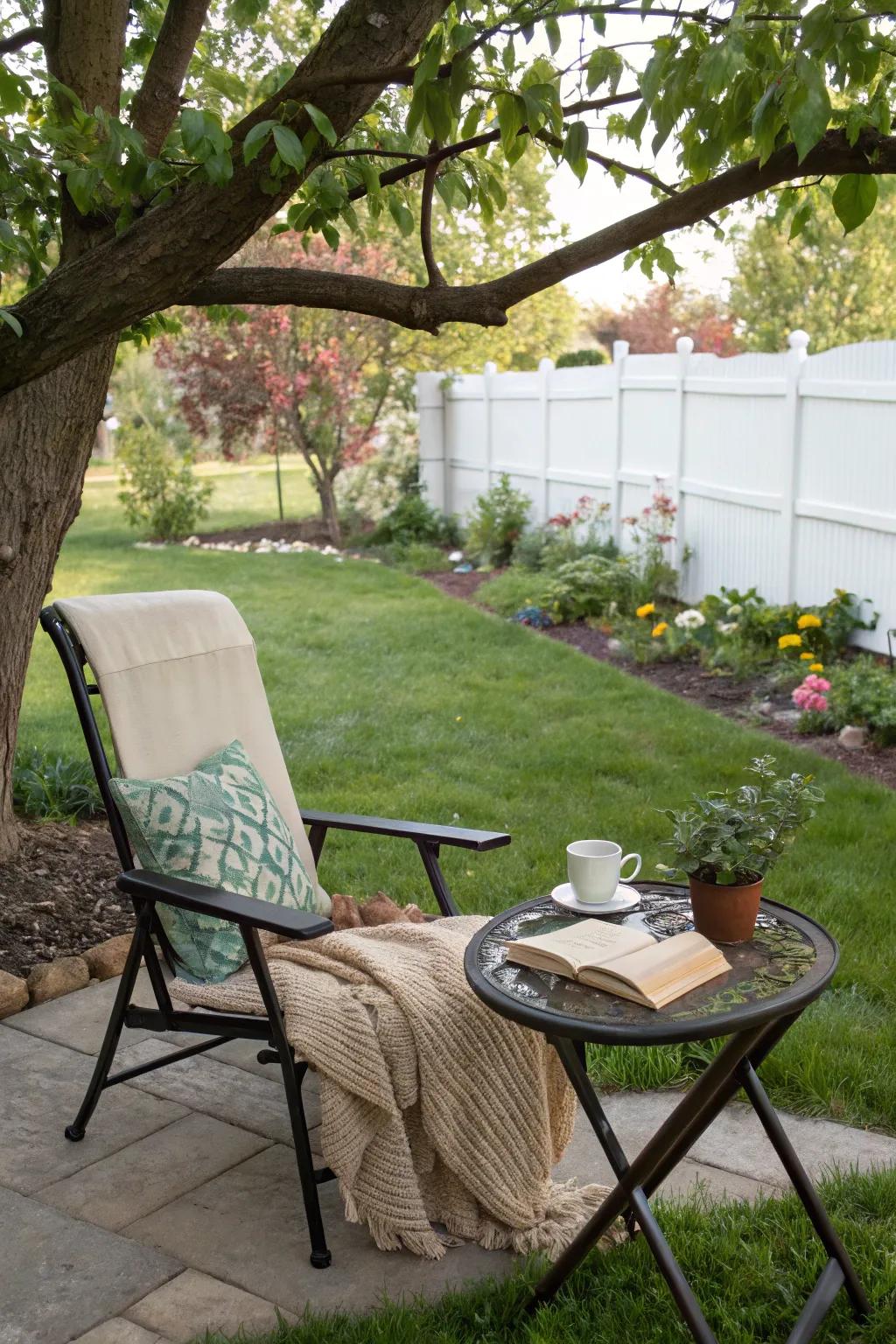
Don’t forget to create a cozy corner for yourself to enjoy the space with your pup. A comfy chair and a good book is my favorite way to relax while my dog plays.
Possibly helpful picks:
- Comfortable Outdoor Lounge Chair: Relax in comfort with a stylish, space-saving outdoor lounge chair perfect for your backyard retreat.
- Cozy Outdoor Throw Blanket: Stay warm and snug with a soft, cozy outdoor throw blanket while watching your pup play.
- Durable Outdoor Side Table: Keep your book and coffee handy with a sturdy outdoor side table perfect for any garden setting.
